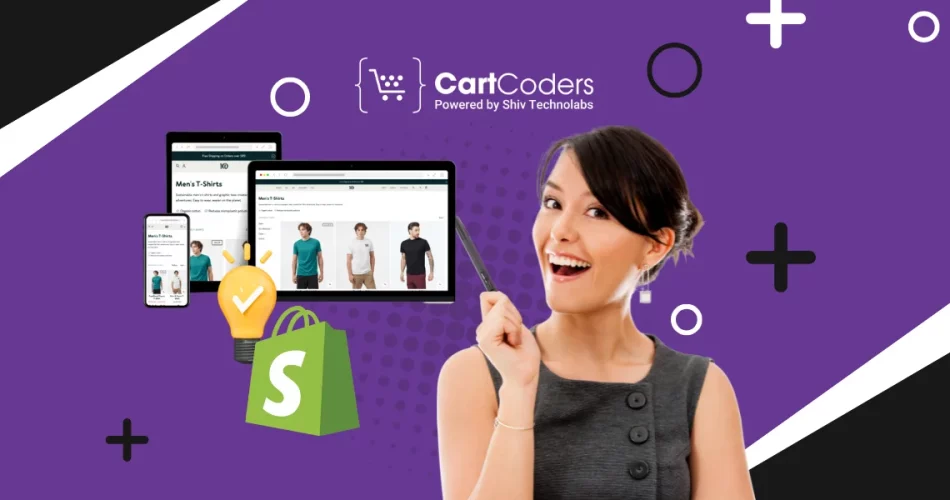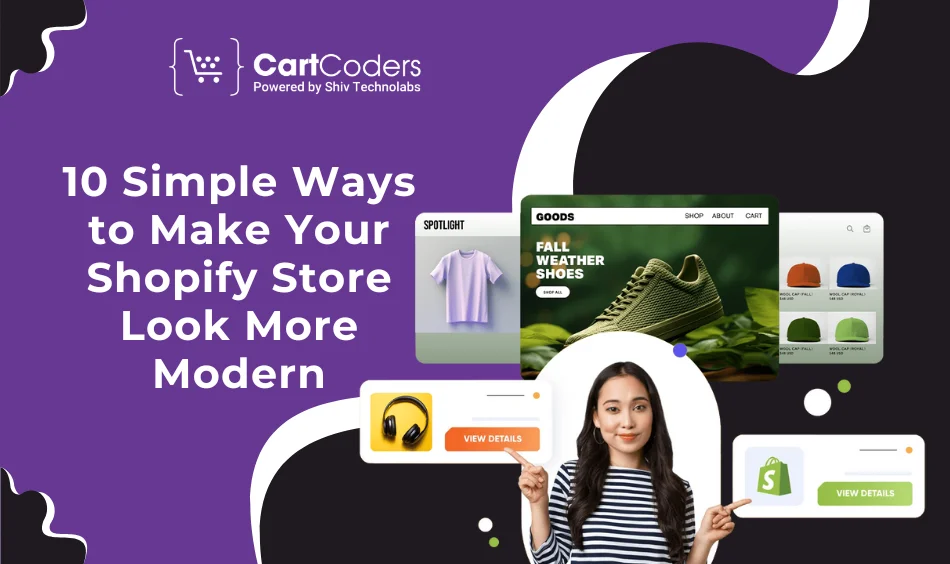Custom Engagement Solutions
Unlock tailored solutions with a free, no-obligation strategy session.
Expert Developers & Engineers on Demand
Scale Your Team with Skilled IT Professionals
Expert Guidance for Digital Transformation

Creating a modern Shopify store today means going beyond surface-level visuals. Shoppers expect a fast, mobile-friendly, and visually consistent experience that reflects current digital standards. If your store looks outdated or hard to use, customers will leave without a second thought.
This guide outlines specific, current Shopify store design tips to help you reshape your storefront without starting from scratch. Let’s walk through the steps to modernize your Shopify store and improve user experience across all devices.
Shoppers today expect more than just clean design—they want speed, clarity, and relevance. A modern Shopify store needs to adapt to these habits, especially with mobile shopping at an all-time high.
Here’s what’s driving the shift:
With this in mind, here we discuss practical tips for Shopify store setup and design to modernize your store in ways that match current customer behavior.

A clean, updated design can make a big difference in how customers experience your Shopify store. Let’s discuss 10 simple, effective changes you can make to give your store a more modern and polished look, without starting from scratch.
If you’re still using an older theme, your store is missing out on key features introduced with Shopify Online Store 2.0. This upgrade supports modular editing, faster page load, and flexible design layouts. With 2.0 themes, you can add custom sections not just on the homepage but across product pages, collections, and even standalone landing pages.
Why this matters
Also Read: Shopify Theme Customization: Partnering with Experts for a Unique Look
Many store owners only customize the homepage and leave the rest untouched. With Shopify 2.0, you can add custom sections to product pages (e.g., brand story, image gallery, FAQs), build landing pages with unique layouts for campaigns, and mix and match blocks like testimonials, countdowns, and icons
Why this matters
Also Read: Shopify Product Page Design Audit: Best Practices for CRO
A sticky header stays visible as users scroll down the page. But instead of a bulky fixed header that takes up space, go for a smart sticky header. These versions shrink or hide parts of the header (like the logo or extra links) as the user scrolls, keeping only the essentials visible, like the cart icon, menu, or search.
Why this matters
Most old-fashioned Shopify stores still rely on standard grid layouts for products. These often lack hierarchy, movement, or any interactive feel. Card-based layouts present products inside defined visual blocks, often with hover effects, shadows, or slight animations.
Why this works
Animations tied to scrolling behavior bring life to a store. When used thoughtfully, these effects make browsing more interactive without getting in the way. Motion catches attention. Scroll-based animations add a bit of rhythm and movement without overdoing it.
Best practices
Most Shopify traffic comes from smartphones. If your mobile experience requires pinching, swiping awkwardly, or squinting, you’re losing sales. A modern Shopify store puts mobile usability front and center.
Key mobile-first design actions
Modern shoppers expect search bars to “understand” them. Generic search fields no longer meet user expectations. AI-driven search tools suggest popular terms, predict intent, and display relevant items with thumbnails as you type.
Features to include
Recommended tools
On mobile, long pages can feel endless. Scroll-snapping lets you break up content into distinct slides or blocks that “snap” into place as the user scrolls. It’s a modern way to guide users through content without overwhelming them. It’s great for lookbooks or featured collections, brand storytelling blocks, and product feature walk-throughs.
How to implement
Let customers interact with your products in their real-life space using AR. Whether it’s furniture, shoes, or accessories, giving shoppers the option to view items through their phone camera helps them make more confident decisions.
Why it works
Voice search is on the rise, especially for mobile and smart home users. Make your product pages and content voice-friendly by writing in natural phrases and targeting longer keyword phrases.
What to focus on
Also Read: AI-Powered Voice Search for Shopify Stores: The Future of E-Commerce
Dark mode is now a standard feature across operating systems, and users expect it in apps and websites too. Giving your visitors a dark mode toggle adds a sleek look and makes late-night browsing easier.
Benefits
A modern Shopify store isn’t just about structure—it’s also about cohesion. Visuals, copy, and buttons need to speak the same visual language.
Common design breaks to fix
By integrating these forward-thinking strategies, you can easily redesign your Shopify store, offering a modern, user-centric experience that resonates with contemporary consumers and sets your brand apart in the competitive e-commerce landscape.
Redesigning a Shopify store can feel overwhelming, especially if you’re juggling product updates, marketing, and customer support at the same time. CartCoders will help you.
CartCoders specializes in Shopify store redesign services tailored for brands that want a cleaner, faster, and more user-focused storefront. Whether you need to switch to a Shopify 2.0 theme, rebuild product pages with custom sections, or create a mobile-first experience from scratch, their team can handle the entire process—start to finish.
Why brands choose CartCoders:
If you’re ready to give your store a sharp, modern feel but prefer to leave the technical work to experts, CartCoders is a trusted partner that knows how to get results.
Modernizing your Shopify store isn’t just about looking better—it’s about creating a smoother, smarter experience that keeps visitors engaged and ready to buy. Whether you apply a few small updates or go for a full redesign, each improvement moves your store closer to what today’s shoppers expect.
If you’re looking to refresh your store without the hassle, CartCoders offers end-to-end Shopify store redesign services tailored to your goals. Our Shopify store redesign services are built around real performance—faster load times, better user flow, and a design that fits your brand. Get in touch with CartCoders to start building a store your customers will enjoy shopping in.
Projects delivered in 15+ industries.
95% retention rate, building lasting partnerships.
Serving clients across 25+ countries.
60+ pros | 10+ years of experience.